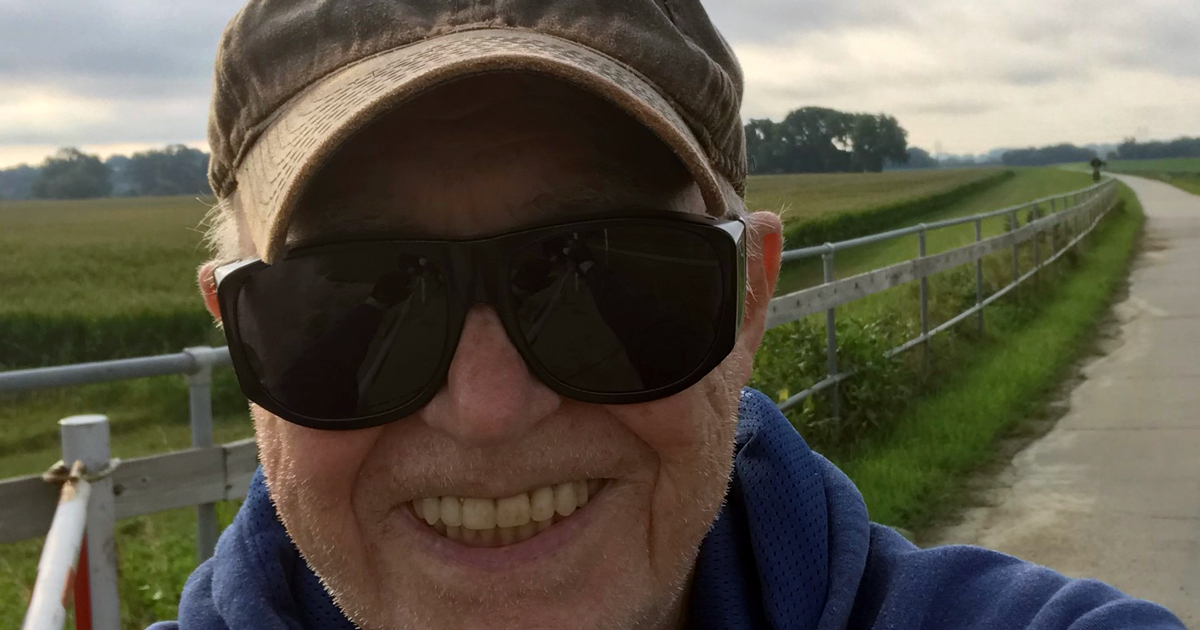My Mohs Surgery: Mohs surgery experience through the eyes of a patient

Bob Polk, DBA, of Omaha, Nebraska, sat down recently to tell his story following Mohs surgery to remove basal cell carcinoma from his nose.
Over a four-month period, I developed what appeared to be a small, shiny bump on the left side of my nose. It was a bit sore, so when it didn’t go away I reported it to my family doctor. In July, he checked it out and took a core biopsy sample. The lab results reported a basal cell carcinoma (BCC), which most often occurs from exposure to ultraviolet radiation from the sun. The radiation triggered changes in the basal cells on the side of my nose, resulting in uncontrolled cell growth. I was getting plenty of sun on my daily walks, so I was glad we found it.
Life is too short to be careless about health, so I took action. I headed to the Nebraska Medicine dermatology team upon a referral from my doctor. The spot seemed to go away, and I thought perhaps it had been cured by the biopsy. Unfortunately, a second bump appeared just above the previous one. I began to steel myself for Mohs micrography surgery. Years ago, I had the process performed on my left hand and it was a grueling all-day event. I was not looking forward to the experience.
A month later, I arrived at the Lauritzen Outpatient Center and was immediately taken to a comfortable exam room. Adam Sutton, MD, a fellowship trained Mohs surgeon specializing in skin cancer, explained the process. Apparently the bump I thought had been cured was still a problem deep inside and the new bump was another of the same kind. Dr. Sutton said he would remove both bumps, which I suspected would take most of the day. Good thing I had brought a book to read.
I thought the surgery would be removal of skin layers not much larger than the biopsy. What I learned was it takes 60 to 90 minutes to analyze each skin layer removed for examination under the microscope. The process was repeated three times, each time with the bandage removed, the area numbed and process repeated. I was immensely relieved when Dr. Sutton told me the surgery was successful and that cosmetic surgery would be performed to close the wounds. He did an expert job repairing the wound area. I had a sore nose, a difficult night, and a huge bandage on my face.
In the recovery stage I applied special cream with daily changes of light bandages until fully healed. For follow-up, my doctors think a complete head to toe skin check in about 90 days is a good idea. The scar today is barely visible, no shiners are present, and I’m not experiencing any discomfort.
I was really impressed with the expertise and care the dermatology team gave me. If I had one piece of advice, I’d encourage others to be aware of their health at all times and act on any condition they notice that causes persistent discomfort. Your family doctor is the first stop. If it requires specialized medical attention, get it.





